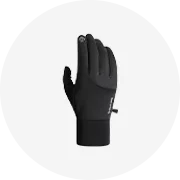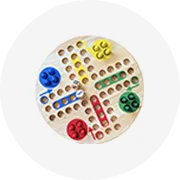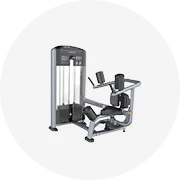Phổ biến trong ngành của bạn

LCH-OES sản xuất bán hàng trực tiếp lachoi phòng thí nghiệm kỹ thuật số khuấy phòng thí nghiệm điện trên không khuấy 2000rpm
20,00 US$ - 176,00 US$
Đơn hàng tối thiểu: 5 Cái
Vận chuyển mỗi chiếc: 19,82 US$


Điện Cực Phẫu Thuật Điện Đông Máu Điện Đông Máu Bút Chì Điện Phẫu Thuật Dây ESU Dùng Một Lần Tần Số Cao
0,68 US$ - 1,30 US$
Đơn hàng tối thiểu: 100 Cái


Rayto RT-2201C uống đông máu Analyzer giá y tế bán tự động duy nhất kênh đông máu Analyzer
499,00 US$ - 999,00 US$
Đơn hàng tối thiểu: 1 Đơn vị


650W 900W 1000W 1200W phòng thí nghiệm nhỏ di động màn hình cảm ứng nghiền dispers ngưng tụ siêu âm homogenizer máy
1.200,00 US$
Đơn hàng tối thiểu: 1 Bộ
Vận chuyển mỗi chiếc: 420,00 US$


Y tế tái sử dụng điện cực đơn cực y tế phẫu thuật nội soi cụ L móc đơn cực
21,00 US$ - 30,00 US$
Đơn hàng tối thiểu: 1 Cái


Máy Làm Đông Máu Lưỡng Cực Nhãn Khoa Dùng Cho Phẫu Thuật Ngoại Khoa
725,00 US$ - 1.200,00 US$
Đơn hàng tối thiểu: 1 Bộ

Không dính Mỹ lưỡng cực forceps electrosurgical mắt mắt phẫu thuật forceps jeweler #4
1,00 US$ - 30,00 US$
Đơn hàng tối thiểu: 5 Cái

Đầu của sản xuất của chúng tôi lưỡng cực Maryland disector kẹp với Cáp nội soi cụ 5 mét CE
187,00 US$ - 190,00 US$
Đơn hàng tối thiểu: 5 Cái

Electrosurgical mcpherson 9.0 cm cong tip 0.5mm tái sử dụng nhíp nha khoa cao cấp cách điện mắt lưỡng cực forceps
4,50 US$ - 5,50 US$
Đơn hàng tối thiểu: 10 Cái

Nhíp Lưỡng Cực Đông Máu Tiêu Chuẩn Châu Âu Nhãn Khoa Phim Plug-In Điện Cực Nhíp Dòng Đông Máu Nhiệt Độ Cao
8,00 US$ - 10,00 US$
Đơn hàng tối thiểu: 1 Cái

Electrosurgical lưỡng cực forceps với cáp Electro đông máu lưỡng cực forceps Made Pakistan
4,20 US$ - 5,10 US$
Đơn hàng tối thiểu: 10 Cái
Các tìm kiếm liên quan:
plasma mechan phẫu thuật lưỡng cực coagulatorhút hút hútkiểm tra lưỡng cựcrf lưỡng cực oemđại tây dương vahợp nhất thắt lưng cột sốngalexandria vagỗ vacủ cải tiết niệuprovidence vakẹp lưỡng cực nhãn khoabộ đông tụ lưỡng cực eletricnema lưỡng cực nema 23đơn vị phẫu thuật điện lưỡng cực tiết niệudụng cụ phẫu thuật đông máu lưỡng cực

Mcpherson cong microsurgery Châu Âu lưỡng cực forceps không dính
32,00 US$ - 38,00 US$
Đơn hàng tối thiểu: 1 Cái

Bán Sỉ Kẹp Lưỡng Cực Kẹp Lưỡi Lê Bằng Thép Không Gỉ Lưỡng Cực Đầu Nhọn Loại Kim Hoàn Mắt Thẳng
2,49 US$ - 2,89 US$
Đơn hàng tối thiểu: 25 Đơn vị

Tái sử dụng lưỡng cực forceps lưỡng cực electrocoagulation nhíp tần số cao đông máu forceps cho electrosurgical đơn vị
2,25 US$ - 3,50 US$
Đơn hàng tối thiểu: 20 Cái

Jeweler #7 tip Kích thước: micro, 0.5mm, Kích thước: 4 "11.5 cm. Electro phẫu thuật lưỡng cực forceps/mắt lưỡng cực forceps
3,50 US$ - 5,00 US$
Đơn hàng tối thiểu: 10 Cái

Lưỡng cực đông máu nhíp Plug-in điện cực nhíp đông máu dòng nhiệt độ cao
15,00 US$ - 30,00 US$
Đơn hàng tối thiểu: 5 Cái

Mc Pherson lưỡng cực forceps-mcpherson lưỡng cực forceps thẳng cong tip màu xanh màu tráng tùy chỉnh nhọn lưỡng cực forceps
1,99 US$ - 2,99 US$
Đơn hàng tối thiểu: 20 Cái

Electro phẫu thuật chúng tôi Electro cách điện lưỡng cực forceps nhãn khoa Dụng Cụ Phẫu Thuật Tái Sử dụng nhíp
15,00 US$ - 18,00 US$
Đơn hàng tối thiểu: 10 Cái

Bán buôn lưỡng cực forceps Bayonet thép không gỉ lưỡng cực forceps jewellers loại nhọn lời khuyên thẳng Nhãn KhoA
1,90 US$ - 3,50 US$
Đơn hàng tối thiểu: 50 Cái

7 chế độ làm việc lưỡng cực electrocautery máy xách tay electrosurgical Máy phát điện 300W phẫu thuật coagulator
980,00 US$ - 1.269,00 US$
Đơn hàng tối thiểu: 1 Bộ

Rất tốt forceps electrocautery mắt lưỡng cực forceps jeweler #5 | mắt dụng cụ phẫu thuật mắt
1,00 US$ - 20,00 US$
Đơn hàng tối thiểu: 5 Cái

Lưỡng cực kẹp không dính mcpherson Euro. Loại đầu nối phẳng
9,00 US$ - 12,00 US$
Đơn hàng tối thiểu: 1 Cái

Lưỡng cực forceps electrosurgical tái sử dụng Iris thẳng 10.8 cm tip 1.0mm Electro đông máu forceps electrosurgical thiết bị
4,57 US$ - 5,59 US$
Đơn hàng tối thiểu: 10 Cái

Thợ Kim Hoàn #5 Nhãn Khoa Hoa Kỳ Loại 2 Pin Kẹp Điện Lưỡng Cực 11.5Cm
22,00 US$ - 25,00 US$
Đơn hàng tối thiểu: 1 Cái

Kích thước đầu tenzel: micro, 0.5mm, Kích thước: 4 "10.2 cm. Electro phẫu thuật lưỡng cực forceps/mắt lưỡng cực forceps
3,50 US$ - 5,00 US$
Đơn hàng tối thiểu: 10 Cái

Dụng Cụ Phẫu Thuật Điện Chất Lượng Cao Khớp Nối Hai Chân Lưỡng Cực Mắt Kẹp Cách Điện Tần Số Cao
7,11 US$ - 7,20 US$
Đơn hàng tối thiểu: 25 Cái

Lưỡng Cực Mắt Kẹp Jeweler #4 | Y Tế Electrosurgery Cụ Cụ Nhãn Khoa Bán Buôn Giá Rẻ Giá
1,00 US$ - 25,00 US$
Đơn hàng tối thiểu: 5 Cái

BC-50D Nhãn Khoa Thiết Bị Quang Học Loại Đục Thủy Tinh Thể Dụng Cụ Phẫu Thuật
1.100,00 US$ - 1.200,00 US$
Đơn hàng tối thiểu: 1 Bộ

Nhíp Đông Máu Lưỡng Cực Nhíp Điện Cực Cắm Màng Mắt Tiêu Chuẩn Châu Âu Dây Đông Máu Nhiệt Độ Cao
8,00 US$ - 12,00 US$
Đơn hàng tối thiểu: 1 Bộ

Lưỡng cực forceps Iris cong 10.8 cm tip 1.0mm nhãn khoa tái sử dụng lưỡng cực forceps đông máu electrosurgical dụng cụ
4,57 US$ - 5,59 US$
Đơn hàng tối thiểu: 10 Cái

Kích thước đầu mcpherson (thẳng): 0.5mm, kích thước: 3 "9.0 cm. Electro phẫu thuật lưỡng cực forceps/mắt lưỡng cực forceps
3,50 US$ - 5,00 US$
Đơn hàng tối thiểu: 10 Cái



Electrosurgical jeweler #7 11.5 cm mắt lưỡng cực forceps với micro tip 0.5mm lưỡng cực forceps electrocoagulation kẹp
4,57 US$ - 5,59 US$
Đơn hàng tối thiểu: 10 Cái

Kích thước đầu mcpherson (cong): 0.5mm, kích thước: 3 "9.0 cm. Electro phẫu thuật lưỡng cực forceps/mắt lưỡng cực forceps
3,50 US$ - 5,00 US$
Đơn hàng tối thiểu: 10 Cái

Không dẫn điện lớp phủ thủy lợi forceps tái sử dụng electrosurgical đông máu forceps Micro lưỡng cực forceps
14,99 US$ - 15,50 US$
Đơn hàng tối thiểu: 10 Cái

Kìm Lưỡng Cực Châu Âu Adson Xanh Sản Xuất Công Ty Pakistan
6,00 US$ - 12,00 US$
Đơn hàng tối thiểu: 1 Cái

9 chế độ làm việc lưỡng cực electrocautery máy xách tay electrobisturi electrosurgical đơn vị
1.439,00 US$ - 1.659,00 US$
Đơn hàng tối thiểu: 1 Bộ

Lưỡng cực kẹp tenzel 10.2 cm với micro tip 0.5mm y tế kẹp Tweezer tái sử dụng electrosurgical cụ
4,57 US$ - 5,59 US$
Đơn hàng tối thiểu: 10 Cái
Các danh mục hàng đầu
Giới thiệu về bộ đông máu lưỡng cực mắt
Alibaba.com có các bộ sưu tập tuyệt đẹp của. bộ đông máu lưỡng cực mắt phụ kiện để phục vụ cho karate riêng biệt và các yêu cầu MA khác. Các danh mục đồ bền và linh hoạt này cũng bao gồm các sản phẩm có thể đeo được và giúp bạn thực hiện các loại hoạt động thể thao này một cách dễ dàng và hiệu quả hơn. Phạm vi rộng của. bộ đông máu lưỡng cực mắt phụ kiện và sản phẩm có sẵn trên trang web được cung cấp bởi các nhà cung cấp và nhà bán buôn hàng đầu với chất lượng hàng đầu và từ các thương hiệu lâu đời nhất. Sự đa dạng. Phụ kiện bộ đông máu lưỡng cực mắt có nhiều mẫu và là những sản phẩm thân thiện với môi trường để sử dụng.
Các danh mục riêng biệt của. bộ đông máu lưỡng cực mắt thiết bị được cung cấp trên trang web được làm bằng vật liệu bền và cứng như EVA, hạt gỗ dát mỏng, cao su, kim loại, v.v., tự hào về độ bền và tính bền vững vượt trội trong khi thực hiện các hoạt động. Những cái này. Các sản phẩm của bộ đông máu lưỡng cực mắt có thể tái chế, không độc hại, không thấm nước, nhẹ và có chất lượng nhiệt tuyệt vời khiến chúng trở nên cực kỳ phổ biến đối với cả chuyên gia và nghiệp dư. Bất kể mục đích của bạn là gì, bạn có thể sử dụng chúng. bộ đông máu lưỡng cực mắt phụ kiện cho bất kỳ thứ gì, có thể là trong phòng tập thể dục của bạn hoặc các giải đấu khác.
Liên hệ với Alibaba.com để biết các danh mục riêng biệt. bộ đông máu lưỡng cực mắt có nhiều màu sắc, kiểu dáng, hình dạng, kích thước và các chất lượng khác tùy thuộc vào yêu cầu của bạn và thiết bị đã chọn. Những bộ sưu tập độc đáo của. Phụ kiện bộ đông máu lưỡng cực mắt bao gồm các sản phẩm như thảm, giày, váy, gậy, miếng bảo vệ chân, găng tay KungFu và nhiều sản phẩm khác để phù hợp với yêu cầu của từng cá nhân. Các sản phẩm này được chứng nhận và thử nghiệm cho tất cả các loại sử dụng khắc nghiệt. Các. Các mặt hàng bộ đông máu lưỡng cực mắt được cung cấp ở đây cũng hoàn toàn có thể tùy chỉnh và đi kèm với các thiết kế lồng vào nhau.
Tại Alibaba.com, bạn có thể chọn giữa nhiều loại. bộ đông máu lưỡng cực mắt đồng thời phù hợp với ngân sách và yêu cầu riêng của bạn. Các sản phẩm này được chứng nhận ISO, SGS và có sẵn dưới dạng đơn đặt hàng OEM cho cả người mua cá nhân và nhà cung cấp số lượng lớn. Bao bì tùy chỉnh với logo và các tùy chỉnh khác có sẵn để mua số lượng lớn.
Các danh mục riêng biệt của. bộ đông máu lưỡng cực mắt thiết bị được cung cấp trên trang web được làm bằng vật liệu bền và cứng như EVA, hạt gỗ dát mỏng, cao su, kim loại, v.v., tự hào về độ bền và tính bền vững vượt trội trong khi thực hiện các hoạt động. Những cái này. Các sản phẩm của bộ đông máu lưỡng cực mắt có thể tái chế, không độc hại, không thấm nước, nhẹ và có chất lượng nhiệt tuyệt vời khiến chúng trở nên cực kỳ phổ biến đối với cả chuyên gia và nghiệp dư. Bất kể mục đích của bạn là gì, bạn có thể sử dụng chúng. bộ đông máu lưỡng cực mắt phụ kiện cho bất kỳ thứ gì, có thể là trong phòng tập thể dục của bạn hoặc các giải đấu khác.
Liên hệ với Alibaba.com để biết các danh mục riêng biệt. bộ đông máu lưỡng cực mắt có nhiều màu sắc, kiểu dáng, hình dạng, kích thước và các chất lượng khác tùy thuộc vào yêu cầu của bạn và thiết bị đã chọn. Những bộ sưu tập độc đáo của. Phụ kiện bộ đông máu lưỡng cực mắt bao gồm các sản phẩm như thảm, giày, váy, gậy, miếng bảo vệ chân, găng tay KungFu và nhiều sản phẩm khác để phù hợp với yêu cầu của từng cá nhân. Các sản phẩm này được chứng nhận và thử nghiệm cho tất cả các loại sử dụng khắc nghiệt. Các. Các mặt hàng bộ đông máu lưỡng cực mắt được cung cấp ở đây cũng hoàn toàn có thể tùy chỉnh và đi kèm với các thiết kế lồng vào nhau.
Tại Alibaba.com, bạn có thể chọn giữa nhiều loại. bộ đông máu lưỡng cực mắt đồng thời phù hợp với ngân sách và yêu cầu riêng của bạn. Các sản phẩm này được chứng nhận ISO, SGS và có sẵn dưới dạng đơn đặt hàng OEM cho cả người mua cá nhân và nhà cung cấp số lượng lớn. Bao bì tùy chỉnh với logo và các tùy chỉnh khác có sẵn để mua số lượng lớn.























